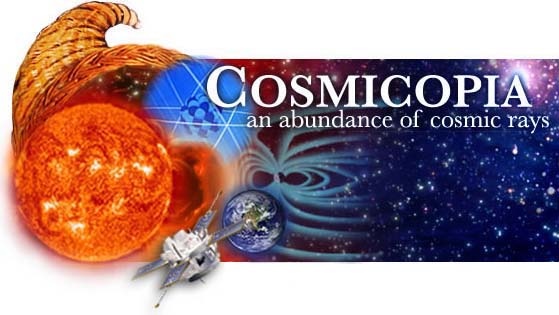
Glossary:
M and N
- Magnet, solenoid
- A solenoid magnet is a coil of insulated wire, usually cylindrical in shape and with a length greater than its diameter. An electric current passing through the solenoid produces a magnetic field similar to that of a bar magnet.
- Magnetic field
- A region of space near a magnetized body or electrical current where magnetic forces can be detected.
- Magnetic field lines
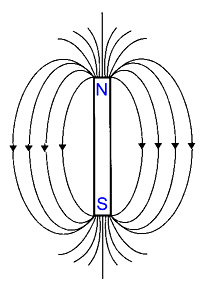
These lines are a way to show the structure of a magnetic field. A compass needle will always point along a field line. The lines are close together where the magnetic force is strong, and spread out where it is weak.- Magnetic storm
- A disturbance in the magnetosphere due to
solar activity.
- Magnetism (Electromagnetism)
- A physical property of an object that shows attraction for iron, as in a magnet. Electromagnetism acts between particles with an electric charge, such as electrons, protons, and ions. It is believed to be associated with moving electricity, and it creates fields of force.
- Magnetometer
- An instrument that measures the magnitude (strength), and sometimes direction of a magnetic field.
- Magnetopause
-
 The location in space where Earth's magnetic field balances the pressure of the solar wind. It is located at the edge of the magnetosphere. See the image on the right.
The location in space where Earth's magnetic field balances the pressure of the solar wind. It is located at the edge of the magnetosphere. See the image on the right. - Magnetosheath
- The region between the bow shock and the magnetopause. It contains very turbulent plasma. See the image above.
- Magnetosphere
- The region surrounding a planet where the planet's magnetic field dominates. See the image above.
More about Earth's magnetosphere...
- Magnetotail
- The extreme extension of a magnetosphere, on the side of a planet opposite the Sun, caused by the solar wind. See the image on the right above.
- Mass
- The total amount of matter in a body. Mass remains the same even with changes in gravity.
- Meteor
- This term describes the bright streak of light caused by a meteoroid as it burns up in Earth's atmosphere. Other names for a meteor include "shooting star" and "falling star".
- Meteorite
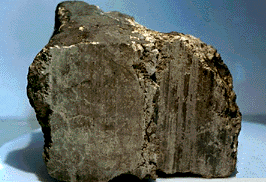 Part of a meteoroid that survives travel through
Earth's atmosphere to land on Earth.
This image of a meteorite is courtesy of NASA ARC.
Part of a meteoroid that survives travel through
Earth's atmosphere to land on Earth.
This image of a meteorite is courtesy of NASA ARC.- Meteoroid
- Small bodies in orbit about the Sun which may fall to Earth or to another planet.
- Molecule
- The smallest part of any substance which has the qualities of that substance, and which can exist alone in a free state. As an example, a molecule of water consists of two atoms of hydrogen and one of oxygen.
- Moon
 A natural body orbiting another larger one. It is a
natural satellite. This
image of Earth's moon is courtesy of NASA ARC.
A natural body orbiting another larger one. It is a
natural satellite. This
image of Earth's moon is courtesy of NASA ARC.
M
- NASA
 National Aeronautics and Space Administration
National Aeronautics and Space Administration- Nebula
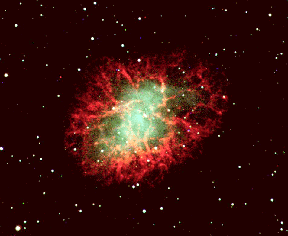
(plural=nebulae) A mass of gas and dust in space. This image is the Crab nebula.- Neutral
- Having no electric charge.
- Neutron
- The part of an atom that has no charge. It is part of the nucleus.
- NOAA
- National Oceanic and Atmospheric Administration
- Nuclear energy
- The energy used or produced in changing the composition of the atomic nucleus.
- Nucleon
- A particle from the nucleus of an atom, either a proton or a neutron.
- Nucleosynthesis
- The creation of new elements in stars by combining lighter nuclei to make heavier nuclei.
- Nucleus
- (plural=nuclei) The small, massive center of an atom containing its protons and neutrons bound together by nuclear force, the strongest force known in nature. The term is also used to describe the central body of a comet.
More about the atomic nucleus...
N
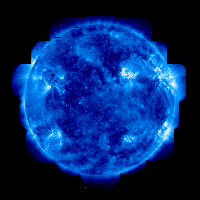

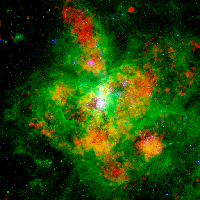
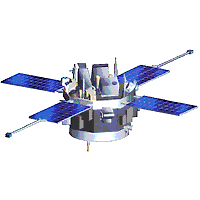
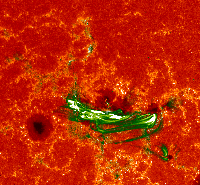
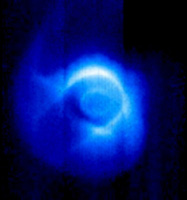
Click on images above to
learn more about them
A service of the Heliophysics
Science Division at NASA's GSFC
Questions and comments to: cosmicopia@cosmicra.gsfc.nasa.gov
Curator: Dr Eric R. Christian, NASA
Responsible NASA Official: Dr Eric R. Christian
Privacy Policy and Important Notices
Questions and comments to: cosmicopia@cosmicra.gsfc.nasa.gov
Curator: Dr Eric R. Christian, NASA
Responsible NASA Official: Dr Eric R. Christian
Privacy Policy and Important Notices

HOME
In the News
History
Ask Us
Great Links
Glossary
Site Map
Search NASA